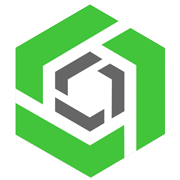For product design teams, switching to new software is borderline risky. Sure, there’s excitement about the potential of a new industrial CAD software or a built-in PDM system, but there’s also anxiety about the learning curve and potential disruptions.
So, when change starts knocking at your tech stack, you know it’s time to craft a plan that eases the status quo into a new, more efficient workflow. A well-thought-out onboarding plan ensures that your team adapts quickly and starts reaping the benefits of the new tool sooner rather than later.
Keep scrolling, and we’ll explore insights from industry leaders at BOA Technology (adventure footwear developer) and FHE (pressure control equipment manufacturer), who have successfully implemented new software – more specifically, a cloud-native industrial CAD system called PTC’s Onshape.
1. Start with Clear Objectives
Before introducing any new software company-wide, it’s crucial to understand why you’re making the change. What problems are you hoping to solve? What benefits are you expecting to gain?
During an Onshape webinar, “CAD Migration Essentials: Strategies for Successfully Transitioning to Cloud-Based CAD,” both Clay Corbett, Director of Engineering at BOA, and Matthew Kibbler, Engineering Manager at FHE, emphasized the importance of defining clear objectives.
For example, Corbett sought to resolve issues with VPN access and product data management (PDM) inefficiencies, while Kibbler aimed to improve vendor communication and reduce quality control errors.
CASE STUDIES: BOA Technology & FHE
2. Involve the Team Early
Getting buy-in from your team is essential. Involve them early in the decision-making process by soliciting their input and addressing their concerns. This not only helps in choosing software that meets everyone’s needs but also makes the team feel invested in the new tool’s success.
Both Corbett and Kibbler emphasized the value of having honest conversations with CAD administrators, who often understand the day-to-day challenges and can offer practical insights. Hosting demo sessions and encouraging team members to ask questions can build excitement and reduce resistance to change.
3. Plan for a Phased Rollout
Rather than flipping the switch all at once, consider a phased rollout. Start by introducing the new software to a small, non-critical project. This allows your team to get comfortable with the tool’s features and workflows without the pressure of a major deadline.
Corbett shared how his team spent six months running trial projects in Onshape before fully transitioning. This approach gave them the confidence that their team could meet project goals without disruption, making the full rollout much smoother.
4. Have a Data Migration Plan
Migrating existing data to a new cloud-native system can be challenging. Industry leaders recommend:
-
Carefully plan your migration strategy based on your specific needs.
-
Considering tools for importing and organizing large assemblies.
-
Focusing on importing individual parts and assemblies to maintain data integrity and traceability.
5. Provide Comprehensive Training
Training is vital to a successful software transition. Offer a variety of training resources to accommodate different learning styles – this could include live training sessions, video tutorials, written guides, and hands-on practice.
Kibbler noted that having a dedicated person to test the software and explore its limitations helped them identify potential issues early and work with the Onshape Support team to find solutions. Assigning “champions” within your team who can lead the training efforts and support their colleagues will facilitate a smoother transition.
6. Set Clear Expectations and Milestones
Set clear expectations and milestones for your team to keep the onboarding process on track. For example, you might expect everyone to complete certain training modules by a specific date or to start using the new software for certain tasks by the end of the first month.
Onshape’s built-in analytics allows administrators to monitor usage and productivity, ensuring the team adapts well to the new system. Regular check-ins and milestone celebrations can help maintain momentum and morale.
LEARNING CENTER: All of the Onshape fundamentals in one place.
7. Monitor Progress and Gather Feedback
Once the software is in use, monitoring its performance against the initial objectives is essential. Regularly gather feedback from the team to understand what’s working well and what challenges they’re facing. This will help you make any necessary adjustments and ensure the software continues delivering value.
Kibbler highlighted how Onshape’s real-time data sharing improved communication with vendors, solving a fundamental problem they faced with their previous CAD system. You can continuously monitor and refine your approach to ensure that the new software meets your team’s evolving needs.
8. Celebrate Successes and Learn from Challenges
Finally, take the time to celebrate your team’s successes with the new software. Whether it’s a project completed more efficiently or improved collaboration, acknowledging these wins will reinforce the new tool’s benefits.
At the same time, reflect on any challenges encountered during the onboarding process. Both Corbett and Kibbler stressed the importance of learning from these experiences to improve future software rollouts. This iterative approach will make each transition smoother than the last.
Why Switch to Onshape?
Cloud-native CAD and PDM systems offer benefits beyond simple data storage. As Corbett and Kibbler have discovered, these systems solve many challenges traditional, file-based CAD tools pose. Here are their favorite benefits:
Seamless Collaboration Across Teams
Cloud-native CAD platforms like Onshape enable multiple engineers to work on the same project simultaneously, regardless of location. This real-time collaboration reduces bottlenecks and speeds up the development process, ensuring that teams can move from concept to production faster.
Improved Vendor Communication and Quality Control
Traditional methods of sharing CAD data with vendors often result in errors and outdated information. Onshape’s cloud-based system allows for live sharing of the latest design data, ensuring that vendors always have access to the most current information. This reduces mistakes, improves quality control, and fosters better relationships with suppliers.
Streamlined Data Management
One of the most significant pain points for engineers is managing the vast amount of data generated during the product development process. With Onshape, PDM is integrated directly into the CAD system, eliminating the need for separate PDM tools and the headaches that come with them. This integration simplifies workflows and reduces the time spent on non-value-added tasks.
Cost and Efficiency Savings
Cloud-based CAD software systems reduce the need for expensive hardware and IT infrastructure. As Corbett noted, his team saved on hardware costs by transitioning to Onshape, which doesn’t require the high-end workstations that traditional CAD systems do. This lowers costs and makes it easier for teams to scale as needed.
Flexibility for Remote and Mobile Work
Accessing CAD data from anywhere is crucial in today’s increasingly remote work environment. Onshape’s cloud platform allows engineers to work from home, on the road, or even in the field, using any device with an internet connection. This flexibility ensures that work continues uninterrupted, regardless of team members' location.
A New, Better Way to Work
Onboarding your team to a cloud-native CAD and PDM system significantly shifts how engineering teams work, collaborate, and manage data. By following the strategies outlined by industry leaders and addressing common concerns, organizations can navigate this transition successfully, unlocking new levels of productivity and innovation in their product development processes.
As Corbett puts it, “It’s interesting to think about your CAD software not just as the software that I start on my computer, but as a partner in helping you develop your products.”
This partnership approach, combined with the power of cloud technology, is set to redefine the future of product design and engineering.
The Onshape
Discovery Program
Learn how qualified CAD professionals
can get Onshape Professional
for up to 6 months – at no cost!

